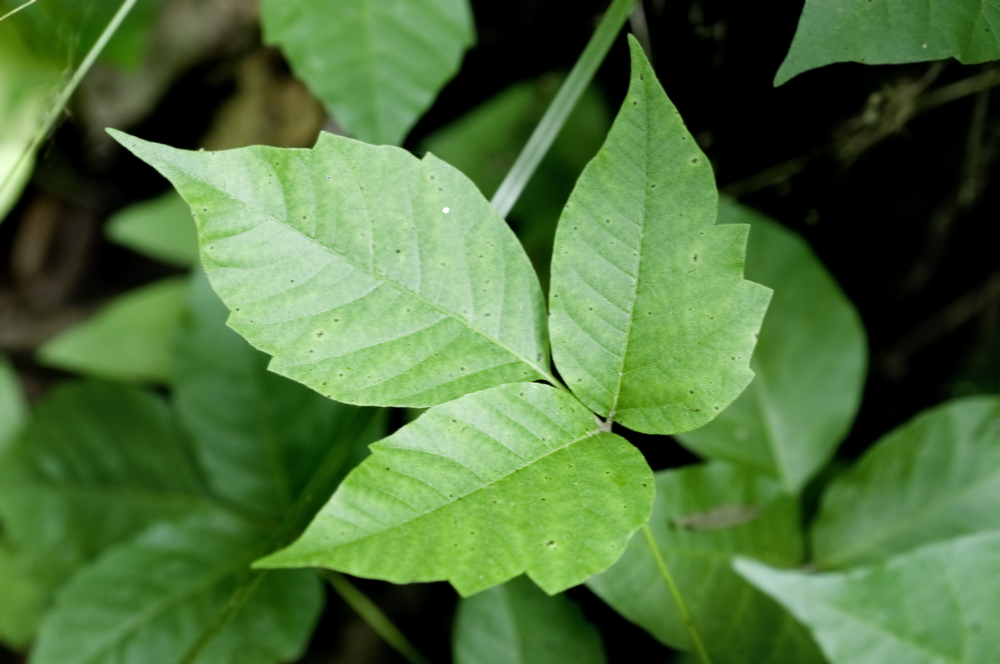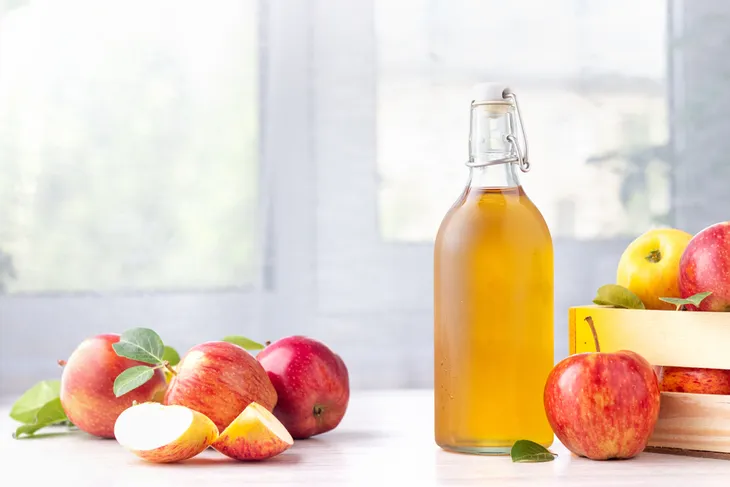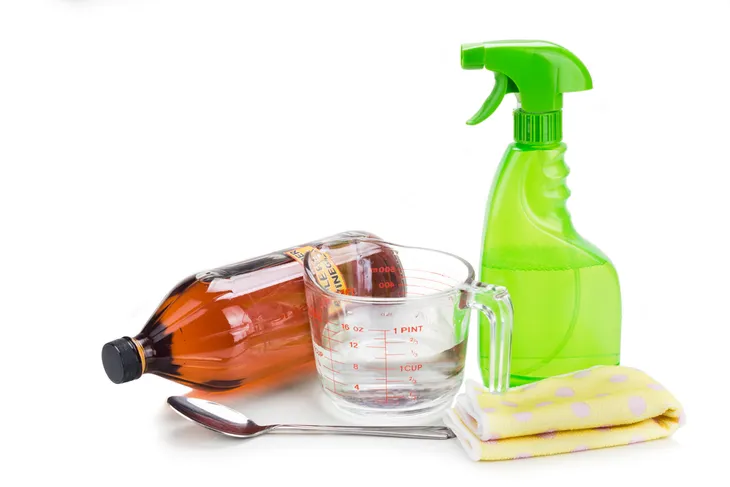“If you go down in the woods today, you’re sure of a big surprise.” You probably know that nursery rhyme about finding teddy bears in the forest… but there are other things that are not very friendly lurking in the foliage. Like poison ivy, for example.
This seemingly innocent-looking plant can cause a lot of itching, a rash and even blistering if your bare skin comes in contact with it. Aside from learning to recognize what poison ivy looks like, and perhaps wearing longer pants/shirt sleeves or avoiding going off the beaten path, here are some effective home cures for a poison ivy rash…
How to Identify Poison Ivy
There’s an old adage that goes: “Leaves of three, leave them be.” Poison ivy grows its leaves in trios, so it’s a good rule of thumb to not touch any plants that match that description. However, there are some specifics provided by Verywell Family.
For example, the source notes the leaves (both the eastern and western varieties) have leaves that are 2 to 4-inches long, which are smooth and can be dull or glossy. The plant has yellowish blossoms in spring that are replaced by light-colored berries later in the summer. The younger plants may have “reddish, droopy leaves.” Keep in mind poison ivy can irritate the skin any time of year.
Where Does Poison Ivy Grow?
Some might believe that poison ivy grows deep in the forest, and you’ll only come in contact with it if you’re traipsing way out there. However, the deep woods is not the only domain of poison ivy and other plants that can cause skin irritation (more on that later).
According to Everyday Health, poison ivy can also be found in wetlands and along streams, as well as urban settings including parks and beside roads. The eastern variety of the plant can grow up trees and fences, it adds. It may even be in your own backyard, so tread lightly.
What Are the Symptoms of Poison Ivy Contact?
Most people are sensitive to the oils (urushiol) that cause an allergic reaction. There can be a variety of symptoms that come with poison ivy. The main symptoms are redness, itching, as well as swelling and blistering, notes the American Academy of Dermatology Association.
The source adds that the rash “often appears in a straight line because of the way the plant brushes against your skin.” However, it can also be more spread out if you touch clothes or pet fur that has the oil resin on it. You can have difficulty breathing if you inhale fumes from burning poison ivy. If this is the case, seek medical help.
Use Soap and Water Early
If you’re aware you’ve come in contact with poison ivy, you can take swift action to possibly avoid some of the unpleasant symptoms. Healthline explains that within an hour of contact you can rinse your skin with lukewarm water that’s mixed with soap or rubbing alcohol.
It notes that you should also wash anything else that comes in contact with the plant, as the plant oil “can remain potent for years.” That means even when you’ve removed the oil from the skin, you can accidentally spread it back (from clothing or even gardening tools, as examples) if you’re not thorough.
Soak Cotton Balls in Apple Cider Vinegar
Apple cider vinegar has many beneficial uses, and apparently one of them is treating a rash from poison ivy, according to Healthline. The source says you can use apple cider vinegar as an “astringent,” which causes tissues to tighten and possibly provide some relief.
The source explains that some people use diluted vinegar, while others do not. It warns that either way, you should test a small area of your skin to ensure it doesn’t cause its own reaction. It suggests soaking a cotton ball in a 50/50 water/vinegar ratio and applying it to the rash, up to four times daily. Finally, do not use this home remedy if there are open blisters.
Create a Vinegar Compress or Spray
While you can follow the advice above, Healthline has some other home remedy ideas involving apple cider vinegar (using the same precautions to test first). To use a vinegar compress, soak a clean cotton rag in a 50/50 mixture of vinegar and water, and apply it for up to 30-minutes.
Alternately, you can pour the same half-and-half mixture into a spray bottle and simply spray it on the affected skin several times each day, adds the source. While not mentioned, we suggest using a new spray bottle for this, or one that has been thoroughly cleaned from whatever liquid was in it before.
Take an Oatmeal Bath
Cleveland Clinic suggests clearing up a poison ivy rash by having a soak in the tub with oatmeal or Domeboro, the latter is a commercial remedy for skin irritation. “They’re very soothing and can help dry up the rash,” the source cites from a doctor.
Verywell Family has a tutorial on how to create an oatmeal bath. You’ll need 1-cup of oatmeal (less for infants), and a blender or food processor to make the oatmeal into fine bits. Test a tablespoon of the oats in a glass of warm water – it should create a milky-looking substance when mixed if its ground properly.
Try Cooling With Cucumber
People use cucumber slices on their eyes during a beauty sleep or spa treatment, which is apparently supposed to help reduce puffiness. It can also have a “cooling” effect on the skin and even help treat sunburn.
Meanwhile, Reader’s Digest Canada says cucumber slices are “one of the simplest home remedies for poison ivy.” Place the slices on the affected area, or make a cucumber paste and apply it to the rash, suggests the source. Meanwhile, the source notes there may be some benefit to rubbing the inside of a banana peel or even watermelon rind on the irritated skin.
Mix It up With Some Baking Soda
Reader’s Digest Canada says baking soda can be an effective way to soothe poison ivy, especially when it’s red with blisters. The source suggests mixing 3-teaspoons of baking soda – which most people probably already have at home – with 1-teaspoon of water. Apply this paste to the irritated skin.
The site explains that the baking soda will flake off when it dries. It notes that if the blisters are oozing, try a mixture of 2-teaspoons of baking soda with 1-quart of water and saturate some sterile gauze pads. Apply the pads to the skin for 10-minutes, four times a day. You can also simply add 1-cup of baking soda to a cool bath and have a soak, the source adds.
Don’t Scratch the Rash
Your instinct is to scratch at the poison ivy rash to try and relieve it, but you’ll only be making it worse. Cleveland Clinic says you should fight off the temptation to scratch at it, as it can break the skin and leave you vulnerable to infection.
It also notes to clip your nails and wear long sleeves to help you avoid damage from scratching. Longer sleeves can help protect blistered/oozing skin, and a “light bandage” may also do the trick to keep it from getting infected.
When to See a Doctor
While many of these home remedies can do the trick, and the rash will heal on its own in many cases, it might come to a point that you’ll want to consult a physician for some advice or treatment if your rash is severe.
Cleveland Clinic says you should book a visit with your doctor if your rash is extensive and widespread, is on your face/causing swelling of the eyelids, or you have other symptoms including a fever, chills, or infected skin. In this case, the doctor might prescribe a steroid.
Other Plants That Cause a Similar Rash
Poison ivy isn’t the only plant that can irritate your skin. There are at least eight other plants that can cause some skin issues due to contact, notes Everyday Health. They include poison oak, which also grows in clusters of three, notes the source. Other plants to be wary of include poison sumac, wood nettle, stinging nettle, baby’s breath (when dried), leadwort, ragweed, and giant hogweed, which can cause some serious blistering and even blindness.
However, with all of this talk of scary plants, remember that it’s good for you to get out into nature. Just be wary of your surroundings and wear appropriate clothing (long sleeves/pants) to avoid a nasty ending to your outing. You can even apply an over-the-counter product to fend off the urushiol resin before going out and take a shower when you return to rinse off any residue.















